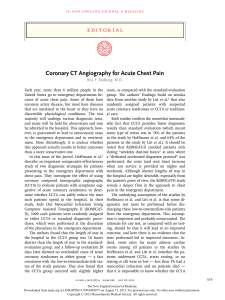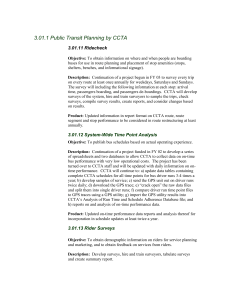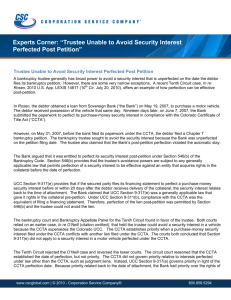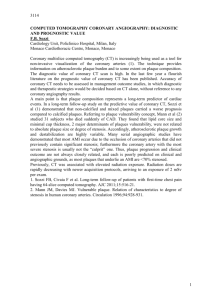CAD Screening for Firefighters
advertisement
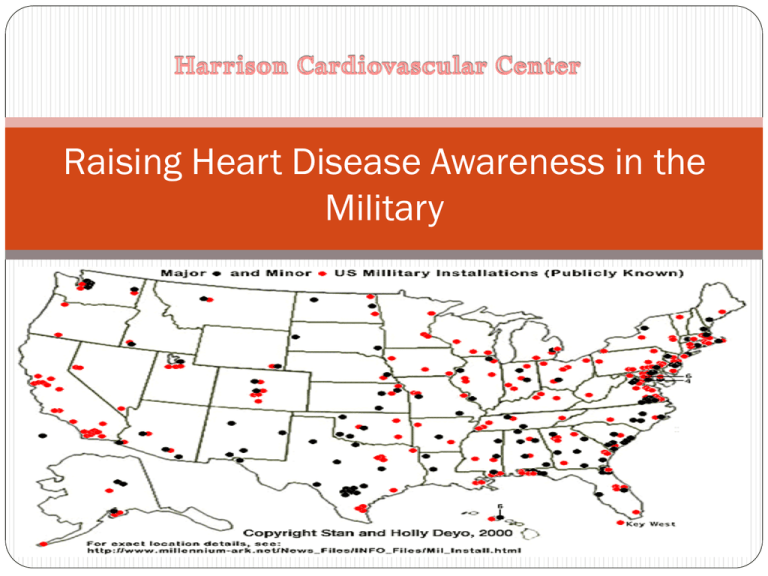
Raising Heart Disease Awareness in the Military Flash Point Due to the strong commitment of an all voluntary military, career soldiers are reaching older ages on active duty. This coincides with the age of onset of heart disease. Early detection of Coronary Artery Disease <50% lipid core and thin cap analysis --------> THIN CAP -------> ? CCTA + + Node ---> >50% HeartFlow Analysis -------> FFRct <80 --------> possible BAVS Result of Military CCTA Study Objective: Looked at the possibility of using CCTA as a method of cardiac disease screening in the military Methods: A retrospective chart review of 25 soldiers that underwent CCTA Results: 5/25 patients had plaque discovered on CCTA. Three had stable plaques and two were vulnerable. Four were men over 40 and one was a female over 50. Conclusion: Proposal of screening all military male over 40 and female over 50 with CCTA to identify presence of plaque SOMA Study Example of early detection of CAD: Asymptomatic 48 y/o soldier with a family history of heart disease underwent CCTA A lipid rich-core and thin fibrous cap was found on CCTA (vulnerable plaque) Four cardiac medications prescribed and angioplasty was scheduled but the patient had a myocardial infarction in four days. Tampa Fire Rescue took to patient to Tampa General hospital where he was saved by emergent angioplasty and stenting. AHA Study: More evidence that CCTA is a good predictor of future ACS Events 15 asymptomatic patients underwent CCTA Of the patients found with plaques, two were determined to be at high risk of rupture One had a STEMI 12 days after a CCTA and the other had a STEMI in185 days CCTA Low radiation exposure Excellent diagnostic accuracy Coronary Calcium Detection 99.9% Negative Predictive Value Plaque characterization Low Cost 10 minute procedure Preparation for CCTA No caffeine or decaf for 12 hours before the test May have to take Toprol-XL (Metoprolol) 2 days before test and day of test No food or drink 3 hours prior to test COST $264 CURRENT PRICE POINT Radiation Exposure PrivaCors Core Laboratory PrivaCors Core Laboratory Chooses and Contracts with US CT Centers for quality control Proprietary software with 24/7 staffing with cardiac imaging specialists Post processing, image review, image sharing, and plaque risk assessment Quality Control: Technical guidance for image acquisition Treatment Based on Results No Plaque means no worry! Minimal Calcification is low risk Mixed Plaque will get aggressive treatment Severe Stenosis will get aggressive treatment Vulnerable Plaque is our highest priority Our Proposal We propose CCTA for the following: MALE MILITARY > 40 years of age & FEMALE MILITARY > 50 years of age References 1) Singh M, Kroman A, Tariq H, Amin Shetal, Morales A, Cahill K, Harrison EE. Special Operations Soldier with Cardiac Family History. JSOM. 2014. 2) Hartlage G, Patel A, Amin S, Morales A, Harrison EE. No One Left Behind. SOMA. 2014. 3) Singh M, Tariq H, Amin S, Morales A, Harrison EE. Are Vulnerable Plaques in Vulnerable Patients Predictive of ST Elevation Myocardial Infarction? AHA. 2014. 4) Tariq A, Amin S, Singh M, Morales A, Cahill K, Harrison EE. Predicting Heart Attack in a Patient PostRadiation Therapy Using Plaque CCTA Analysis and Serum Biomarker Test. OncoReview. 2014. 5) Hadamitzky et al. Optimized Prognositic Score for Coronary Computed Tomographic Angiography: Results From the CONFIRM Registry: J Am Coll Cardiol 2013;62(5):468-76 6) Pontone G, Andreini D. A Long-Term Prognostic Value of CT angiography and Exercise ECG in Patients with Suspected CAD. J Am Coll Cardiol Imaging 2013: 6(6): 641-50 7)Lloyd-Jones D, Adams R, Carnethon M, et al. Heart disease and stroke statistics – 2009 update: a report from the American Heart Association Statistics Committee and Stroke Statistics Subcommittee. Circulation. 2009; 119:480–486. 8) Cross DS et al. Coronary risk assessment among intermediate risk patients using a clinical and biomarker based algorithm developed in validated in two population cohorts. CMRO 2012;28(11):1819-30 9) Fishbein, Michael C, Robert J. Siegel. How Big Are Coronary Atherosclerotic Plaques That Rupture? Circulation.1996; 94: 2662-2666


